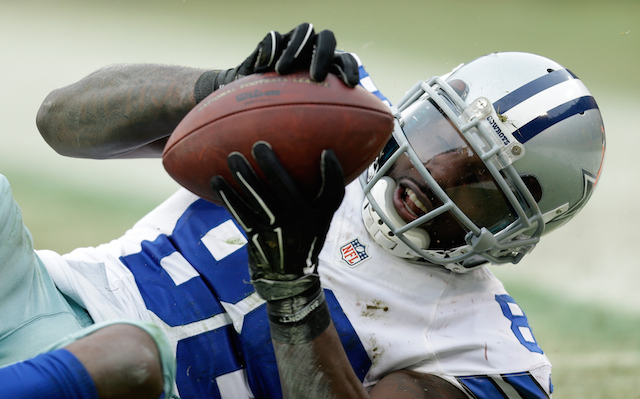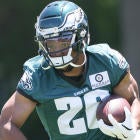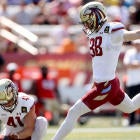
PHOENIX -- The NFL announced a semi-subtle tweak Monday to the league's rule on what constitutes a catch. The good news? The goal was more clarity. The bad news? Everyone still feels confused.
The controversy surrounding what is and what is not a catch was cranked back up this year with the vigor of a million angry Cowboys fans on social media, crying conspiracy when Dez Bryant's incredible leaping catch against the Packers in the playoffs was ruled incomplete. Many non-Cowboys fans -- and every Lions fan -- pointed out the karma of the Cowboys failing to advance thanks to the officials hosing them.
But the thing is the officials didn't mess up Bryant's catch. According to the rules, what happened to Dez was an incomplete pass. So naturally the Competition Committee would change this rule during the offseason? Not so much.
The rule is only tweaked. Based off of Dez Bryant's non-catch catch in the Cowboys-Packers playoff game, the league changed the wording of a player needing to make "a football move" to a player needing to "establish himself as a runner."
No one is any less confused (or angry on Twitter) so let's try and help you out here.
The original rule from the NFL, with emphasis by yours truly, definitely paints the play in question as a non catch for Dez.
To gain possession of a loose ball that has been caught, intercepted, or recovered, a player must have complete control of the ball and have both feet or any other part of his body, other than his hands, completely on the ground inbounds, and maintain control of the ball long enough to perform an act common to the game. If the player loses the ball while simultaneously touching both feet or any other part of his body to the ground or if there is any doubt that the acts were simultaneous, there is no possession. This rule allies in the field of play and in the end zone.
Under the new ruling, Dez -- or whoever -- would simply need to maintain control of the ball long enough to establish himself as a runner.
Here's an example of this happening: Rams tight end Lance Kendricks, during a Week 6 home game against the Seahawks, caught a pass from Austin Davis on a crossing route, turned towards the goal line, dived in and fumbled the ball.

This is a catch, according to NFL VP of Officiating Dean Blandino.
"The difference between this play and the Bryant play is that there the receiver has possession, he’s become a runner and then he extends the ball for the goal line," Blandino said. "If the ball breaks the plane in possession of a runner, it's a touchdown at that point."
Another example came in Week 1 when Broncos tight end Julius Thomas caught a long pass on the sideline from Peyton Manning against the Colts.

The critical piece here is that Thomas -- even though he did fall to the ground after being tackled -- is not "going to the ground to make the catch" according to Blandino.
"Another example here where the receiver, he’s not going to the ground to make the catch," Blandino said. "He has control, both feet down, he has the ability to ward off, protect himself from contact, so he doesn’t have to protect himself when he lands."

"Just one more example when we talk about holding the ball until after the initial contact you’ll see here Nelson goes to the ground, he lands on the ground and then the defender knocks it loose," Blandino said. "That’s a catch because he has completed the requirements, held the ball until after his initial contact. His initial contact is there, then the defender knocks it loose."
Essentially Blandino said the NFL believes Dez' action was not -- and still is not -- a catch.

So even though Dez took not one, not two but three steps inbounds, because he was going to the ground and using his hand as he goes to the ground, it wasn't a catch under the old rules and it won't be a catch under the new tweaked rule.
"The committee looked at a lot of tape, didn't recommend a change to the rule but wanted to clean up some of the language, put it more in line with the defenseless player rule and the receiver who can clearly establish himself as a runner does not have to hold on to the football if he subsequently goes to the ground to be a catch," Blandino said.
There's going to be anger persisting relating to Bryant's catch/non-catch. But the reality is within the framework of these rules he didn't make a catch.





















